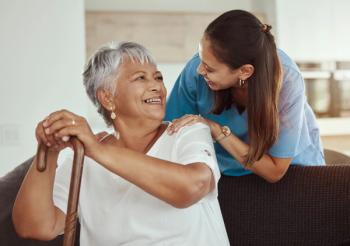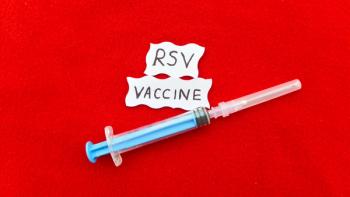
Expert: There’s a Concern Rural Adults ‘Are Moving Ever Further Away’ From the Guidance of Oncology Professionals
Jakob Jensen, PhD, professor in the Department of Communication at the University of Utah and member of the Huntsman Cancer Institute, discusses how oncology pharmacy professionals can effectively address fatalistic beliefs and perceptions of cancer-related information among rural adults.
Pharmacy Times interviewed Jakob Jensen, PhD, professor in the Department of Communication at the University of Utah and member of the Huntsman Cancer Institute, on a study he was the senior author of that assessed rural residents’ beliefs and perceptions of cancer-related information in comparison with those of urban residents.
Alana Hippensteele: How can oncology pharmacy professionals effectively address these beliefs and perceptions among rural adults to better provide prevention care and treatment opportunities to this population?
Jakob Jensen: Yeah, I think there's a lot of ways. Again, first, don't take the beliefs too literally, you should assume that rural adults are more likely to be fatalistic and have information overload, but you should also know that it's not so much they believe it as it's their coping mechanism. It's their crutch. So, I would try to lean into it insofar as you can engage access issues, you will probably start to see these beliefs dwindle or not be mentioned, right? This stresses the importance of rural outreach with things like mobile clinics.
In the state of Utah, we have a mobile mammography clinic. It's incredibly popular in our rural communities. The moment that that clinic rolls into town suddenly access issues turn to zero, and use increases. That said, when these beliefs set in, even when we roll in with access, we sometimes must engage the belief, right? So, we sometimes have to say, well, okay, we're going to have to pitch this. In terms of the fatalism, we're going to have to emphasize the basic things about mammograms. So, before we roll in, the mobile mammogram clinic will sometimes run a little pre-campaign before it ever arrives, [such as a] poster campaign or social media campaign that talks about the mobile clinic, that shows its numbers, how successful it's been, how it's reduced, for example, the stage of breast cancer that we identify in rural communities dramatically, how it's improved outcomes—you must do some groundwork.
I sometimes say, when your population is initially predisposed against you, you must stick to the fundamentals, you must start off saying to each, demonstrating them that mammography works, that it is successful. It's one of the reasons I was so frustrated when there was a little bit of backlash, for example, against mammography. I was saying, you got to be mindful that, first, I'm not convinced that the data was all that damaging in mammography. Secondly, we have huge disparities in mammography utilization. So, when you start touting that mammography might not be as effective as we claim, who's going to really suffer from that? All these outreach efforts we do there, it's the underserved populations that are going to be the ones that are the first out.
So, the disparities widened dramatically after 2009. When that happened, and it was predictable that they would—stick to the fundamentals, try to reduce access issues, really think about follow up. I mean, I think some innovative providers sometimes try to come up with ways that they can even reduce the need for follow up, [such as] is it possible if I see you in the morning, and then we can process this in the afternoon. In the late afternoon, I see you or like tomorrow morning, I see you. So, like, spend the night in a hotel, we can just do this in a 2-day run. Some of our best providers in Salt Lake City, when they're interacting with our rural populations, they really take this access-related instructional issue very seriously. And when we don't take it seriously, then we should expect things like two-thirds will not follow up—and then we know what happens with that.
I also think, good providers talk about this out loud, right? So, for example, information overload—is it because that's a real belief that real adults are more likely to have, then focus on the fact that you don't need them to know everything, ‘There's just a few things I want you to think about when you're at home, mainly these 2 things.’
Sometimes, lean against information overload. Some of my patients go home and they spend a lot of time on the internet reading up about that, if you think that's going to be rewarding for you then do it. But my advice to you is, these are the 2 things you really need to know. Sometimes going online just stresses people out and it has them chasing a lot of ghosts, so deal with that. If we know that with overload, sometimes you try to simplify it and you try to prevent them from doing overload activities.
We know rural adults, for example, are more likely to go online and look for health information, but burnout is a result of it. So, they go spin their wheels. So, kind of engage that activity and say like, you don't need to do that.
I just did an appointment, for example. And again, I'm not a rural adult and I live in a city. But my provider, I thought they were great at this, I said, ‘Well, I was looking up online that, I could do X,Y, and Z.’ And they laughed a little bit and said, ‘I like it when patients take care of their own health and think about their own health care—that's valuable. But in this case, one thing I would ask is, here's what I want you to really think about—this is the thing, it's going to matter. If you go look up online, you're going to just chase a whole bunch of stuff that’s not relevant for you, and I'm not telling you how to do it. I'm just telling you, you're just going to stress yourself out. This is what matters.’ And honestly, I took their advice, and I'm a person that is an information fiend and I was like, ‘What? I'll take you up on that. I'll move on.’ So, I think those are the kind of little things that providers can do that could have a huge impact with patients.
Alana Hippensteele: Absolutely. That is interesting. Why are these perceptions and beliefs of cancer a point to address now?
Jakob Jensen: Yeah, well, because there's always a concern that populations are moving ever further away from us. And with rural adults, I think we have some genuine concerns that they're becoming more anti-medicine, more anti-research, that they're pulling away towards sometimes self-care models that are not the healthiest.
If we don't engage this issue, and just let it fester, there's good reason to believe that it just gets worse over time. You begin to check out more and more, and just say, the heck with it. And the history of rural health is one of xenophobia, at some level is one of isolation. Rural adults come to embrace their isolation in ways that are not often the best for their physical health, their mental health, and the health of their community.
I think at this moment, that the pandemic could have fed some in the same way that could have helped us a little bit in telemedicine, it could be feeding some very negative xenophobic beliefs, and xenophobic tendencies. And one would think this would be getting worse right now without help rather than getting better.
Alana Hippensteele: Any closing thoughts on this topic?
Jakob Jensen: This is a key moment in the history of our country in terms of rural health. The National Institutes of Health is devoting large percentages of its portfolio to thinking about disparity, including rural adults, and those who live in frontier counties, which are our most remote rural counties that have the most limited infrastructure.
I'm from a rural county, but I'm from a frontier county. Circle is in Macomb County, which is frontier. And the frontier counties, which are primarily in the West, are incredibly hard yet limited in their scope. And so, what I would say is, this is a moment for providers to think about underserved groups across the board. We talk a lot about DEI—diversity, equity, and inclusivity—and it's an important moment for those issues. And part of that is also our rural adults.
By the way, rural adults are more likely to be people of color, for example, they're more likely to be low income, they're more likely to be elderly, they're more likely to have multiple comorbidities. So, our rural adults are a population that often have significant disparities and where our providers can do the best. I guess I would also end with saying, some of the providers that I really respect the most that work with rural populations, they'll frame it like this—Doug Grossman, for example, is a dermatologist who says, ‘I need to force myself to think about our rural adults more, because that's where a lot of my highest risk, most high need patients are. But it's also the most inconvenient for me. And if I don't think about it, then the patients who need me the most, I'm not seeing.’
I think almost every provider out there, that will resonate with—there are patients that need you. And here's an important group, and they might need you more now than they've ever needed you. And they won't always be easy to deal with, and they won't always be easy to get to, and you might have to think in innovative ways to get to them, but when you can, there's a lot of good that can be done. So yeah, that's what I would close with.
Newsletter
Stay informed on drug updates, treatment guidelines, and pharmacy practice trends—subscribe to Pharmacy Times for weekly clinical insights.




















































































































































































































